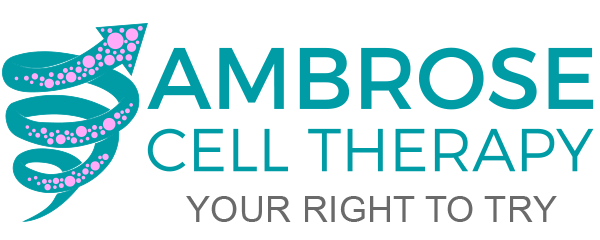A Golden Era of Cell-Assisted Fitness
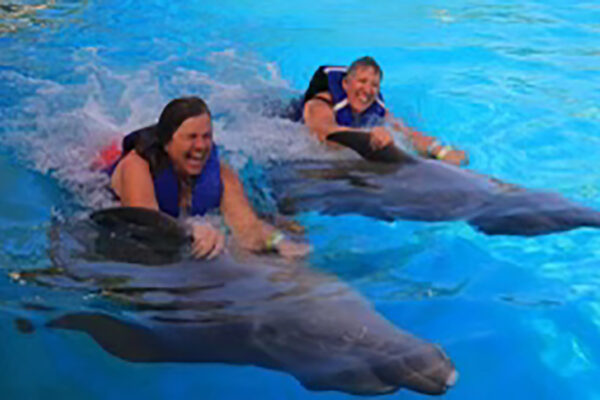 In Oct 2021, Mary Grace, a 58-year-old adventurer, retraumatized her left knee trekking the Himalayas. Until then, she had surmounted a hospitalizing concussion, sports injuries, constant pain, brain fog, and chronic fatigue to scale new heights. But this incident was different – an air ambulance brought her down the mountain.
In Oct 2021, Mary Grace, a 58-year-old adventurer, retraumatized her left knee trekking the Himalayas. Until then, she had surmounted a hospitalizing concussion, sports injuries, constant pain, brain fog, and chronic fatigue to scale new heights. But this incident was different – an air ambulance brought her down the mountain.
Mary Grace exercised her Right to Try AMBROSE Cell Therapy six weeks later. Her two-year patient-reported outcome demonstrates that a Golden Era of Cell-Assisted Fitness has begun.
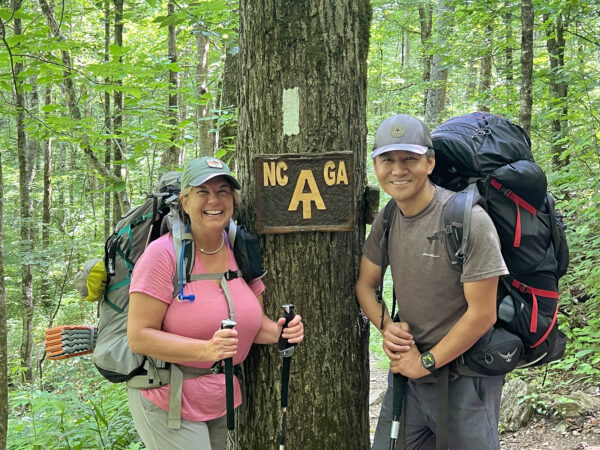 Over the 24 months following her single Ambrose treatment, Mary Grace resumed hiking, skiing, and open-water swimming in Mexico – against the tide, no less. She took up windsurfing alongside whales, too.
Over the 24 months following her single Ambrose treatment, Mary Grace resumed hiking, skiing, and open-water swimming in Mexico – against the tide, no less. She took up windsurfing alongside whales, too.
Her training culminated with hiking 75 miles of the Appalachian Trail with a backpack and sleeping in a tent – without injury or relapse.
Here, we tie Mary Grace’s downfall to an unsuspected culprit and explain how her adipose-derived regenerative cells (ADRCs) started her climb back to extraordinary fitness levels. Or, as she says, “I am doing more than I ever had before.”
Tiger’s Travails
In contrast to Mary Grace’s return to fitness, too many elite athletes like Tiger Woods, fitness fanatics, and weekend warriors resort to surgery, drugs, and devices (the standard of care). But they find themselves resigned to living with limitations and pain. More on Tiger’s road to retirement despite access to the best surgeons fame can buy later. First, what led to Mary Grace’s fall from grace?
Over Training Syndrome – Too Fit?
Mary Grace’s exercise program embraced the five pillars of physical fitness: (1) body composition, (2) flexibility, (3) muscular strength, (4) muscular endurance, and (5) cardiorespiratory endurance.

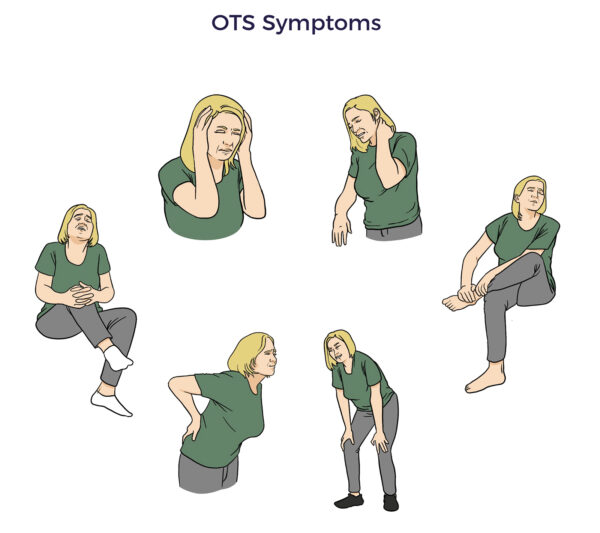 Mary Grace should have been a pillar of health as she approached her sixties, a pivotal point in healthspan. However, her love of demanding sports resulted in overtraining syndrome (OTS).
Mary Grace should have been a pillar of health as she approached her sixties, a pivotal point in healthspan. However, her love of demanding sports resulted in overtraining syndrome (OTS).
More than 90 years ago, physiologists recognized that sustained, intense training reduces athletic performance by perturbing multiple body systems.
Mary Grace’s arthritic shoulder, painful knees, hips, elbow, neck, back, and feet were the tip of the OTS iceberg. Chronic fatigue, injury proneness, burnout, and brain fog are part and parcel of this sparsely discussed but common condition.[1]
Adventurous Meets Risk Adverse
For Mary Grace, going under the knife was not worth the risk. As she put it, “I have been in the healthcare business my whole career. No way would I get surgery or joint replacements.” As for giving up on adventure, she stated, “I am too young to grow old.”
Mary Grace knew there was a better option. Her husband, Thomas, accessed his ADRCs for a 25-year-old knee injury with Ambrose’s predecessor group in 2016. He had extensive scar damage from his 1991 orthoscopic surgery. Prior to Ambrose, his doctor recommended a knee replacement and shoulder surgery to repair a torn rotator cuff.
After his ADRC-based protocol, Thomas returned to walking, losing 25 pounds in short order. Seven years out, Thomas functions fine with his own knee. His shoulder gets a little stiff from time to time, but he works it out with some exercise.
The Autonomic Nervous System – Hanging Fitness in the Balance
The autonomic nervous system (ANS) works without our conscious direction; hence, it is “autonomous.”
The ANS controls inflammation, immune regulation, blood pressure, bladder and bowel function, the gut microbiome, and more. [2]
Working out too hard or for too long imbalances the autonomic nervous system, regardless of how “fit” the person appears. Contrary to popular belief, fitness fanatics get sick more often and are more prone to autoimmune disorders than people in the Blue Zones who garden, walk, and socialize with friends.[3] [4]
A go-go-go life, Covid, Epstein-Barr Virus (mononucleosis), and Lyme Disease infections can have an “overtraining” effect as well. [5] [6] [7]
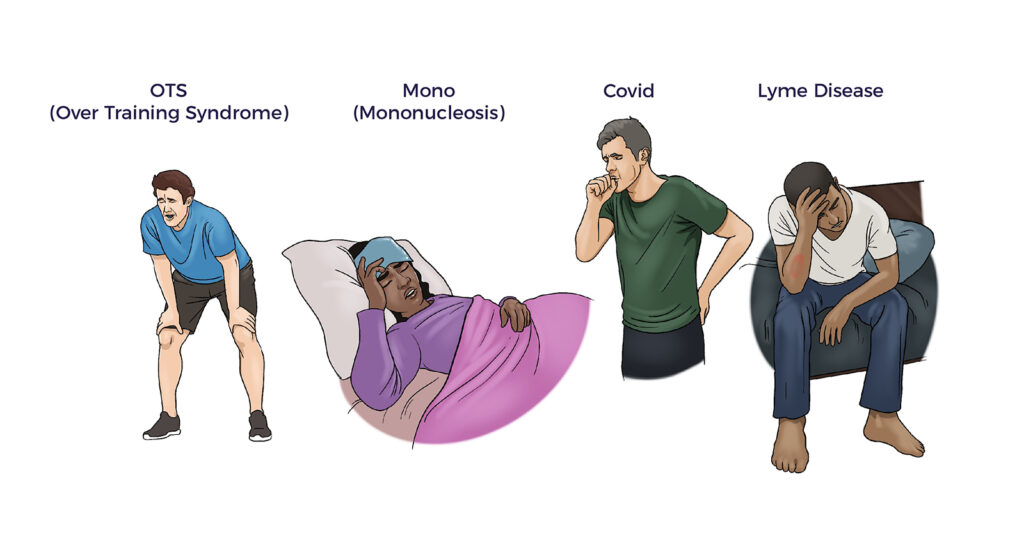
Just as Buddha found Nirvana in Nepal, restoring autonomic nervous system (ANS) balance leads to the Nirvana of Health: multisystem balance or homeostasis.
The Autonomic Nervous System Two Divisions.
Sympathetic Division:
- Mary Grace thrives on open water swimming in Puerto Vallarta. But when she spotted a hammerhead shark, her sympathetic nervous system went into action. Her blood pressure increased, her heartbeat elevated, and her digestion slowed.
Parasympathetic Division
- When Mary Grace finishes swimming with the whales, she chills with her husband and friends. Here, the parasympathetic nervous system plays a rest and digest tune. Relaxation and laughter set in. The sympathetic nervous system calms down. [8]
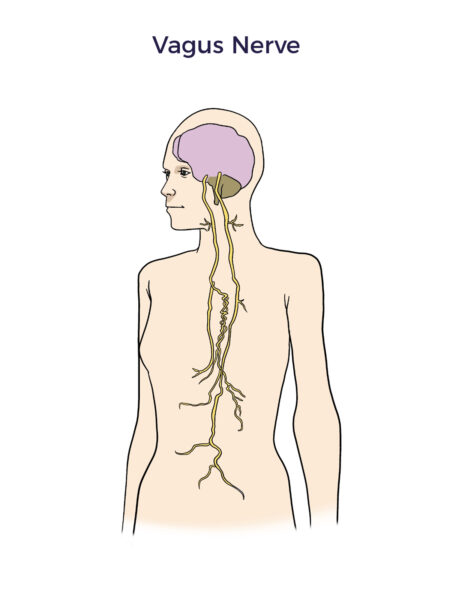 Vagus Nerve
Vagus Nerve
The vagus nerve is our physiology’s fitness coach. It guides the brain’s connections with the spine, heart, lungs, kidneys, and gut. The VN transitions the autonomic nervous system from stress to rest and back again as appropriate.
When Mary Grace’s sympathetic nervous system was overactivated, her parasympathetic nervous system and vagus nerve underperformed.
A hyperactive sympathetic response raises cortisol and adrenaline levels, lighting the inflammation fire. Then, the immune system throws gas on the flames, resulting in autoimmune diseases. [9]
Parasympathetic underactivity or reduced vagal tone contributes to depression, brain fog, fatigue, insomnia, and weakness. It’s like resting when you don’t want to and not being able to sleep when you need to. [10]
ADRCs Restore ANS Function and Vagal Tone
In 2017, researchers at Houston Methodist documented significant ANS improvements in two patients with autonomic dysfunction (dysautonomia)/ after a single autologous adipose-derived stem cell (ADSC) infusion.
The post-treatment follow-up studies showed:
- Increased vagal tone
- Stabilized blood pressure and heart rates
- Improved circulation in the brain
- Reduced Inflammatory markers [11]
Mary Grace’s revived mental clarity, energy, and lack of pain indicate her ADRCs restored enduring ANS function.
Tiger’s Travails
 In contrast to Mary Grace’s near pain-free turnaround, Tiger Woods epitomizes the risks of excessive training and relying on surgeries, followed by medications, to manage his pain and depression.
In contrast to Mary Grace’s near pain-free turnaround, Tiger Woods epitomizes the risks of excessive training and relying on surgeries, followed by medications, to manage his pain and depression.
- In 1994, when he was just 18 years old, a surgeon removed two benign tumors and scar tissue from his left knee. Over the next 27 years, he had five back surgeries, four more knee operations, recurrent Achilles tendon tears, and a neck strain.
- In May 2017, police arrested Tiger on suspicion of driving under the influence. A toxicology report revealed: Two opioids, Vicodin and Dilaudid, a benzodiazepine, Xanax, that induces feelings of calm (anxiolysis), drowsiness, and sleep, Ambien, a “z-drug” for sleep, and a cannabinoid, THC, for pain, according to com.
- In 2022, a catastrophic car crash nearly killed him, requiring several life-saving surgeries. His doctors operated on him two more times after that. [12]
Ironically, when Mary Grace resumed training for the Appalachian trail, Tiger withdrew from the Hero World Challenge due to plantar fasciitis in November 2022. He was walking too much, a telling sign of how far his fitness had fallen.
At the 2023 Masters, Tiger Woods, in last place, withdrew before play resumed on Sunday due to injury. He told fans this was probably his last attempt at another Green Jacket.
During the same week, Mary Grace described her Appalachian trail training, “I hiked backward and up steep hills. I swam against the tide for a half mile, returned, and swam back against the tide. I bounce back faster. I couldn’t even do that when I was younger.”
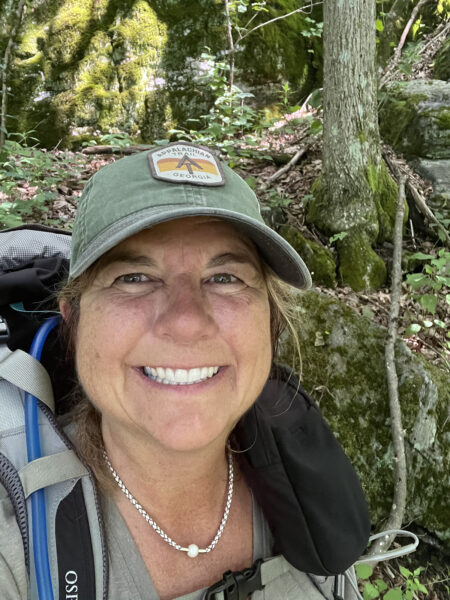 While Mary Grace is not a world-class competitive athlete, the comparison holds. Few women have adventured to so many places in so many ways as her.
While Mary Grace is not a world-class competitive athlete, the comparison holds. Few women have adventured to so many places in so many ways as her.
Mary Grace is just getting started—
And while Tiger continues to suffer, Mary Grace says, “I didn’t realize how much pain I was in until I wasn’t in it anymore.”
Published studies, including over 80 Celution System peer-reviewed papers, support Mary Grace’s conclusion: “After my stem cell treatment, I feel sharper and have better energy. I feel great and am doing more than I have ever done.” [13] [14].[15] [16] [17] [18]
[2] Bellocchi C et al. The Interplay between Autonomic Nervous System and Inflammation across Systemic Autoimmune Diseases. Int J Mol Sci. 2022 Feb 23;23(5):2449.
[3] Kajaia T et al. THE EFFECTS OF NON-FUNCTIONAL OVERREACHING AND OVERTRAINING ON AUTONOMIC NERVOUS SYSTEM FUNCTION IN HIGHLY TRAINED ATHLETES. Georgian Med News. 2017 Mar;(264):97-103.
[4] Leal A et al. ‘Inflammation and Autonomic Function’, Autonomic Nervous System. InTech, Oct. 24, 2018.
[5] Lehmann, M. (1998). Autonomic Imbalance Hypothesis and Overtraining Syndrome. Med. Sci. Sports Exerc. 30 (7), 1140–1145.9
[6] Kreher JB, Schwartz JB. Overtraining Syndrome: A Practical Guide. Sports Health. 2012;4(2):128-138.
[7] Acanfora, D et al. Impaired Vagal Activity in Long-COVID-19 Patients. Viruses 2022, 14, 1035.
[8] Pavlov VA, Tracey KJ. The vagus nerve and the inflammatory reflex–linking immunity and metabolism. Nat Rev Endocrinol. 2012 Dec;8(12):743-54.
[9] Bellocchi C et al. The Interplay between Autonomic Nervous System and Inflammation across Systemic Autoimmune Diseases. Int J Mol Sci. 2022 Feb 23;23(5):2449.
[10] Shinba T et al. Major Depressive Disorder and Chronic Fatigue Syndrome Show Characteristic Heart Rate Variability Profiles Reflecting Autonomic Dysregulations: Differentiation by Linear Discriminant Analysis. Sensors (Basel). 2023 Jun 4;23(11):5330.
[11] Numan M et al. Autologous Adipose Stem Cell Therapy for Autonomic Nervous System Dysfunction in Two Young Patients STEM CELLS AND DEVELOPMENT Volume 26, Number 6, 2017
[12] https://bleacherreport.com/articles/2727452-tiger-woods-toxicology-report-reveals-5-drugs-in-his-system-during-dui-arrest https://www.therecoveryvillage.com/drug-addiction/tiger-woods-dui-prescription-drugs/
[13] Vaquero J, et al. Progressive increase in brain glucose metabolism after intrathecal administration of autologous mesenchymal stromal cells in patients with diffuse axonal injury. Cytotherapy. 2017 Jan;19(1):88-94.
[14] Bonsack B, Corey S, Shear A, et al. Mesenchymal stem cell therapy alleviates the neuroinflammation associated with acquired brain injury. CNS Neurosci Ther. 2020;26:603–615.
[15] Mosser DM, Hamidzadeh K, Goncalves R. Macrophages and the maintenance of homeostasis. Cell Mol Immunol. 2021 Mar;18(3):579-587.
[16] Vizoso FJ et al. Mesenchymal Stem Cells in Homeostasis and Systemic Diseases: Hypothesis, Evidences, and Therapeutic Opportunities. Int J Mol Sci. 2019 Jul 31;20(15):3738.
[17] Naik S et al. Two to Tango: Dialog between Immunity and Stem Cells in Health and Disease. Cell. 2018 Nov 1;175(4):908-920.
[18] Kallal N et al. “Regulation of autoimmune‐mediated neuroinflammation by endothelial cells.” European Journal of Immunology (2024): 2350482.
